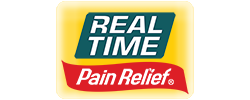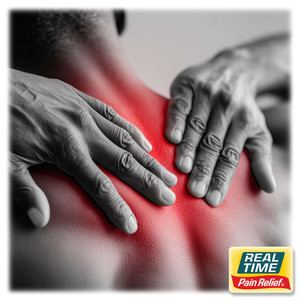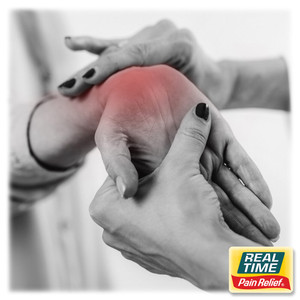Avoid Serious Side Effects of Pain Killers and NSAIDs with Pain Relief Alternatives
23rd Mar 2022
Whether you have occasional pain, such as muscle soreness or deal with chronic pain from arthritis or other conditions, you want quick, safe relief. Some people reach for pain medication including narcotic painkillers or non-steroidal anti-inflammatory drugs (NSAIDs). But painkillers including NSAIDs can have serious side effects especially if taken on a regular basis.
Side Effects of Pain Killers and NSAIDs
There are different categories of painkillers including opioids and NSAIDs. Opioids work on specific receptors in the brain to decrease pain. Common narcotic painkillers include morphine, oxycodone, and codeine. Opioids have several side effects including constipation, depression, and drowsiness. Long-term use can also lead to hormone imbalances and a weakened immune system. Opioids can also lead to dependency. The rates of overdose deaths and addiction have dramatically increased in recent years. According to the Centers for Disease Control and Prevention, prescription opioid overdose deaths have risen by 10.6 percent in recent years. Some people turn to NSAID drugs as an alternative to narcotic pain medication. But NSAIDs also have several side effects including:
- Bloating
- Heartburn
- Stomach pain
- Nausea
- Diarrhea
Regular use of NSAIDs may cause even more serious side effects in some cases. According to research published in Best Practices & Research Clinical Gastroenterology, taking NSAIDs may increase a person’s risk of stomach problems including ulcers. Studies also indicate that when taken regularly, NSAIDs are also associated with kidney and cardiovascular problems.
Nature's Alternatives to Ease Pain
The good news is if you have pain, some alternatives can be an effective and safe way to ease the pain. In fact, the Centers for Disease Control and Prevention and the American College of Physicians recommend trying non-drug treatments for pain relief as the first course of action. Usually, nature's alternatives to ease pain do not cause any side effects. Plus, some treatments have additional benefits besides reducing pain. Consider the following ways to ease the pain:
Heat
Applying heat to a painful area can decrease soreness and improve blood flow. It also relaxes the muscles and can ease painful spasms. You can use dry heat or moist heat to ease pain. For example, apply dry heat by using a heating pad or dry heat packs. Use moist heat by applying a warm towel or sitting in a warm bath. Use heat for 20 to 30 minutes several times a day. Be careful to avoid burning the skin when applying heat.
Topical Pain Relief
Topical pain relievers can be a great way to treat aches and pain. Topical medications provide relief without causing the systemic side effects of oral drugs. Topical pain relievers may be in the form of a lotion, spray, gel, and cream and are applied directly to the skin. Many topical pain relievers work by blocking nerve endings close to the skin. Look for a topical reliever that contains ingredients, such as menthol, arnica, or trolamine salicylate, which may help to decrease the discomfort. Other beneficial ingredients include Capsicum, Aloe Vera, Emu Oil, Willow Bark, and More.
Stretches
Stretching can also be an effective way to decrease pain, especially low back pain. The specific stretches to do depends on the muscle or area of the body that is sore. General stretching guidelines to decrease pain include stretching gently and slowly and holding the stretch for 15 to 20 seconds. It’s also important to avoid stretching cold muscles. Walk for about five minutes to warm up your muscles before stretching. Try stretching once or twice daily to decrease pain. Keep in mind; you should feel the stretch, but if you feel sudden or sharp pain, stop stretching.
Meditation
The saying “mind over matter” may be true when it comes to meditation and pain. Research published in the Journal of Neuroscience indicated that meditation significantly reduced pain in study participants. There are different types of meditation that may help pain. Most studies used mindful meditation. Classes, books, and webinars are available to teach meditation. Meditation may take practice before it is an effective pain reducer.
Herbs and Supplements
Several herbs and supplements may also reduce pain. Herbs and supplements are generally safe for most people to take. But it’s always best to talk with your healthcare provider before taking them. Some of the most common pain reducing herbs and supplements include:
- Joint Support Supplements: There are herbal blends of supplements that contain beneficial ingredients for the health of joints and cartilage, which can help reduce common aches and pains.
- White willow bark: One of the compounds in white willow bark is salicin, which converts to salicylic acid. Salicylic acid is one of the components in aspirin. Naturally occurring salicin appears to cause fewer side effects than aspirin.
- Turmeric: Turmeric, which contains the active ingredient curcumin, may also be effective in reducing pain. Turmeric acts as an anti-inflammatory agent, which may decrease certain types of pain. In research published in the Journal of Alternative and Complementary Medicine, turmeric was as effective as ibuprofen in treating pain due to knee osteoarthritis.
- Omega-3: Omega-3 is a fatty acid that has been found to have several health benefits including decreasing pain. Omega-3 is thought to affect the same biochemical pathways in the brain as pain medications. It also decreases inflammation, which reduces pain.
Acupuncture and Acupressure
Depending on the type of pain you have, acupuncture or acupressure may be an effective natural treatment. Both treatments involve stimulating pressure points in the body. Specific pressure points are associated with certain areas of the body. By stimulating the pressure points, it restores balance in the body and treats various conditions including pain. Acupuncture and acupressure may also promote the release of serotonin, which is a neurotransmitter that reduces pain naturally.
Pain Relief You Can Trust® Since 1998
For over 20 years, families across the U.S. have turned to Real Time’s lotions and creams for PAIN RELIEF YOU CAN TRUST®. From Lifestyle Essentials, through our Nujuvena line, to Pain Relief Formulas, Real Time has you covered. LEARN MORE
Sources
- https://www.cdc.gov/media/releases/2018/p0329-drug-overdose-deaths.html
- https://www.ncbi.nlm.nih.gov/pubmed/20227026
- https://my.clevelandclinic.org/health/drugs/11086-non-steroidal-anti-inflammatory-medicines-nsaids
- http://www.jneurosci.org/content/36/11/3391.short
- https://www.ncbi.nlm.nih.gov/pubmed/19678780





